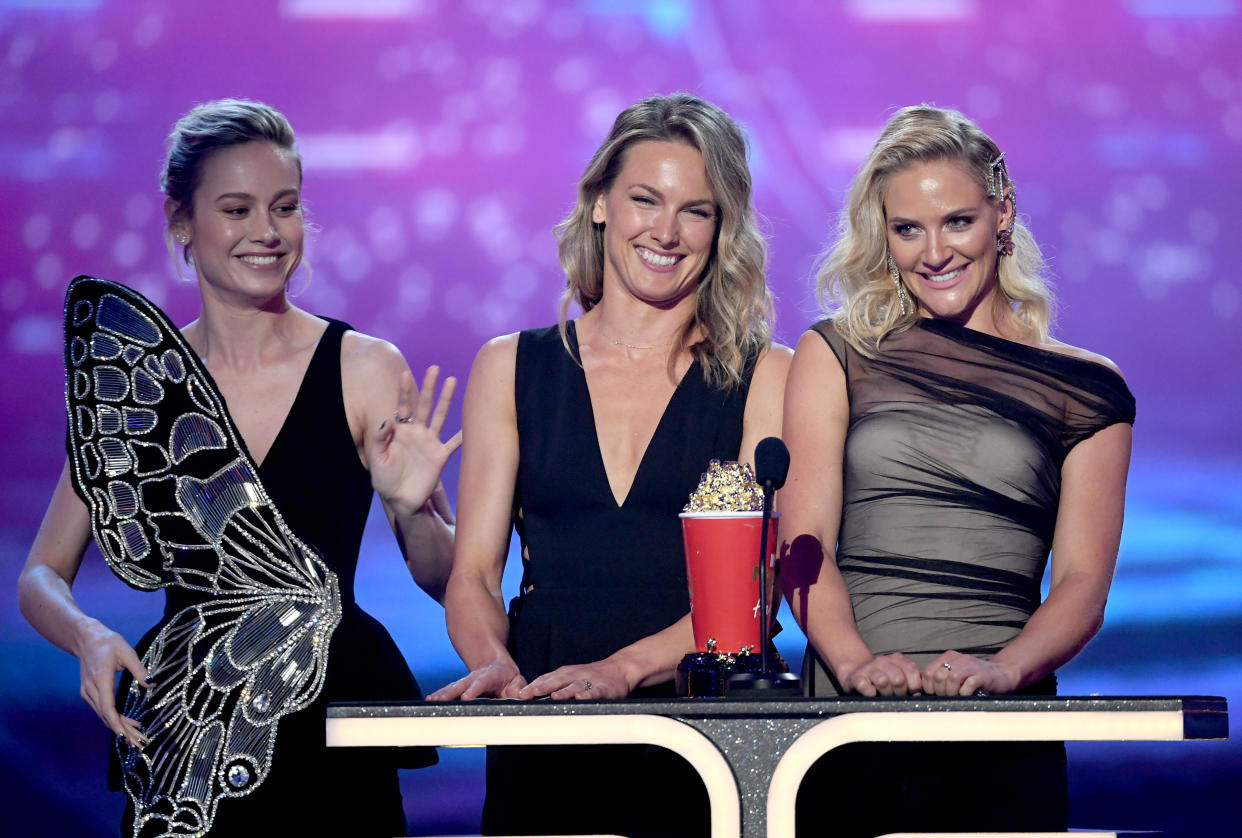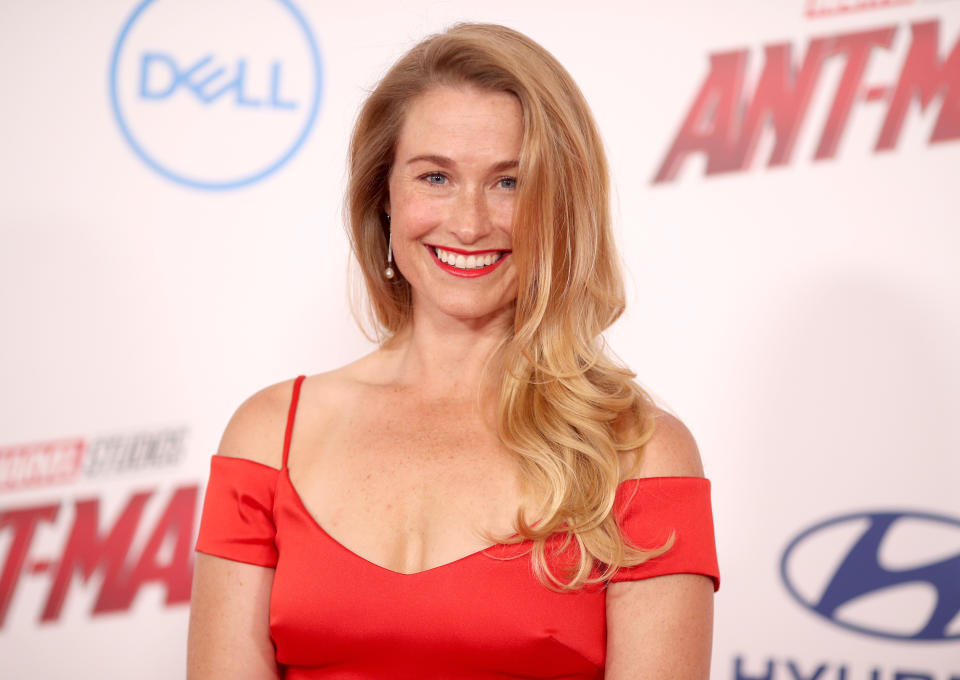We chat with 'Captain Marvel' stuntwoman Ingrid Kleinig

SINGAPORE — With superhero movies becoming ever more popular and breaking box office records, one thing audiences don’t really realise is that behind every action star is a stunt double who works hard to make things look good on camera.
Stuntwoman Ingrid Kleinig is one of those performers, and though you may not know it, you have most likely seen her in action on the big screen. Kleinig has been a stunt double for Evangeline Lilly in the The Hobbit trilogy, Margot Robbie in Suicide Squad, and most recently doubled for Brie Larson in Captain Marvel.
You can see Ingrid in action in her stunt reel here:
When she tells people about her job, the reactions she get are mixed. “Sometimes it’s awe, sometimes it’s surprise, sometimes it’s incredulity. I think a lot of people don’t realise that it is a profession and a career,” she says. In fact, Ingrid herself did not know that the industry existed until she got involved after a chance meeting with a stunt coordinator she worked with while rehearsing for the opening ceremony of the 2000 Sydney Olympics.
Ingrid was in town recently on 14 September as part of Disney’s Storytelling Bootcamp, where she spoke about how stuntwork is a key part of storytelling in today’s media. She sat down with Yahoo Lifestyle Singapore for a chat about her career and where the stunt industry is headed.
How did you get into this industry?
I did a lot of adventure sports growing up. I trained formatively as a dancer at university, and so I was working for a physical theatre company and we were doing the opening ceremony for the Sydney Olympics in 2000. I was flying about 40 metres above the arena on wires. And it was through that that I met a stunt coordinator who was overseeing the safety of the ceremony. He said to me, “Look, you’re not afraid of heights, you’re good in a harness, you should be a stunt person.”
It was only then that I realised that I could combine my love of performing with my love of physicality and the outdoors and physical storytelling. I could put the two together and earn a living. That was 19 years ago and I haven’t looked back since.
Did you have to do any sort of specialist training when you switched to stunt work instead?
I first started out in Australia as a stunt performer. In Australia you actually need to be graded, there’s a national ratification system where you have to achieve certain qualifications and certain levels of skills across a broad range of areas. And there are different levels to that grading so you start out as an apprentice and once you achieve a certain level you move up through the ranks based on how many years you’ve been in the industry, the number of days on set, what mainline stunts you’ve achieved.
I got to a point where I kind of reached the limit of where I could go in Australian film because we get one or two big films a year in Australia, maybe one Marvel film every couple of years if we’re lucky. And the odds of there being a lead character in that one film that I’m the perfect double for were very slim. I found myself doing the same action over and over again and I decided that it was time to jump ship and seek out greener pastures. As much as I love the Australian film industry, I wanted the challenge of the leading roles.
I first went to London and doubled Margot Robbie in Tarzan. As soon as I was in London, I started getting calls from the States, and it just took off from there. I went over there and worked on Suicide Squad doubling Margot again, and then I was doubling Evangeline who I had worked with in New Zealand on The Hobbit trilogy, and then Brie Larson on King Kong: Skull Island, and then Captain Marvel. It’s been quite a quick trajectory.
Those are some really huge films. What’s your experience been like in these giant ensemble pieces with complicated fight choreography and so many people involved?
I think the key to those giant films is that it’s a family, and it takes a village. It’s like raising a child. On those kinds of things, I can’t do everything myself. I’m supported by a whole team of people and often you know, on a lot of films, sometimes there’s two or three doubles for different units running simultaneously.
We’re supported by a fight choreographer, an entire fight team, often there’s a movement director, a swordmaster and a stunt coordinator, so there’s all these people feeding into the character and feeding into my work. I have a voice in that and in the creation of what we do of the physicality, but I’m guided so much by the people I work with, and of course the director and actor obviously have their own character choices that feed into what I’m doing.

What would you say is the most complicated stunt you’ve ever performed?
I often get asked what is the most dangerous stunt I’ve ever done.
I feel like stunt work may be inherently dangerous anyway, or am I wrong with that assumption?
Yes and no. It actually shouldn’t be dangerous. These days there shouldn’t be an element of danger involved. There is perhaps risk, but with ever-evolving technologies that we have and what we can do nowadays in post(-production) and CG, and with rigs and taking out wires, we kind of do everything we can to mitigate the risk. If I thought a stunt was dangerous, I wouldn’t do it.
One of the more complex ones that we did for Suicide Squad was where Harley Quinn was lying down on a motorcycle. I think what was difficult was getting the VFX rig for the bike to lie down and the quick release to make it happen at the right cue. But Margot actually did some takes of that herself. She was on a rig and a truck was tied to the bike at the same time driving along her, so she couldn’t actually go under the bike or get dragged along the ground. The complexity of the set up is more pertinent than the difficulty of the stunt itself.
So it’s more of the setting up, and then having to reset it and reshoot that makes it complex?
Yeah, and figuring out all the kinks and getting it to as near-perfect as it can be. And once that’s figured out, that’s the hard bit done. Then we put the actor on the line and say, “go for it!”
What’s the biggest misconception people have about stunt people?
That we’re all daredevils! Or adrenaline junkies. I think back in the day that was probably the case, because stunt people generally came from a military background because they were good with weapons and explosives, which were a big part of a lot of movie making back in the day. Either that or they came from a cowboy background, because a lot of movies were Westerns. They rode horses and drove cattle. There was a sort of macho vibe back in the day, and that carries through a little bit today.
But I often find that nowadays you get people that come from a film-making background, and who have just found a different way to tell a story or enjoy the physical side of it. And you get stunt coordinators who work with aeronautical engineers to figure out how to, for example, flip this car 360 degrees and have it land back on its wheels again. So it’s much more of a science in that respect than people think it is.
Who were your inspirations or role models in the industry?
I don’t think growing up I had a role model in the stunt industry because I didn’t know the industry existed. And even in my early years coming up in the ranks in the stunt industry, there were very few women doing it at a high level in Australia.
I think strong female characters in films are probably the characters that I gravitate towards now when I’m making decisions about which roles to take on.
Will you be working with Margot Robbie or Brie Larson again soon?
I am currently working with Margot Robbie. I can’t tell you the name of the movie, but it’s not hard to figure out. (Laughs) I enjoy revisiting working relationships and I love working with Margot.
What about Evangeline Lilly?
She’s just finished a series in Canada, but there were no stunts for her on that one. We’ll see what’s next, but I’d love to work with her again. It’s been a long working relationship with Evangeline. The first film I did with her was in 2011 when we started on The Hobbit. We spent the better part of three years filming those films and shot those pretty much back-to-back.
How do you think stunt work will evolve as action movies become bigger and bigger?
That’s a good question. It’s a bit of a controversial one because the more technology that we can use and the better that CG gets, the less stunt performers have to do practically, which is a pro and a con. It means that technically there’s less work, but it also expands the realm of possibility for the action that we can create.
I think some are concerned that it’s a dying job, but I totally disagree. The audience can tell the difference, so I think technology is just going to inform and enhance what we do and expand our longevity in the industry.


